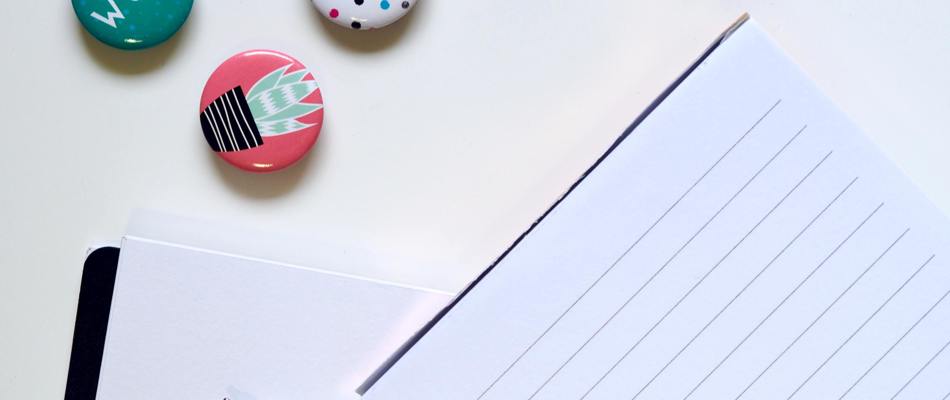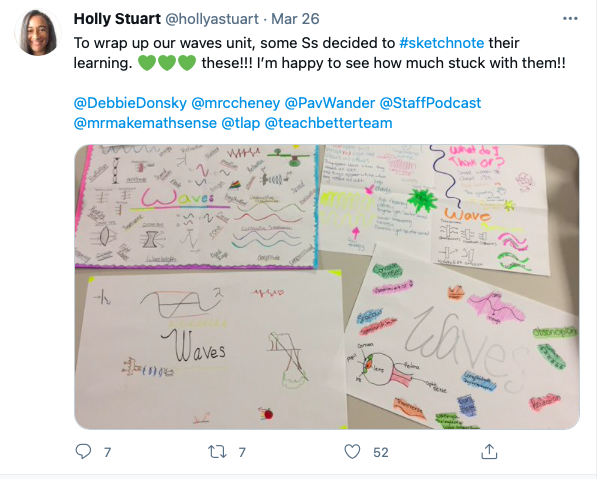How—and why—to introduce visual note-taking to your students
Back
This post was initially published in April on Edutopia here. Edutopia is a US-based source for what works in education, showing people how they can adopt or adapt best practices and telling stories of innovation and continuous learning in the real world. It is funded by the George Lucas Educational Foundation.
Unlike conventional note-taking, which can “border on the edge of transcription,” allowing students to try more visual, interpretive methods of processing materials helps them “identify connections between topics and themes,” writes Nimah Gobir for KQED.
One technique known as sketchnoting—simple, hand-drawn renderings of things like facts, dates, or abstract concepts—allows students to respond to complex new ideas by engaging multiple parts of the brain simultaneously to deepen learning and retention, says Gobir. Instead of passively writing down everything a speaker is saying, the practice pushes students to actively process and make sense of what they’re learning.

“Sketchnoting doesn’t just lead to gains in keeping students’ attention, it’s a useful way for learners to organize and retain information,” she writes. “They’re actively listening and creating a visual representation of what they're learning while continuing to stay engaged in class.”
Findings from a 2018 study back that up: Students who were asked to draw what they’d learned were nearly twice as likely to remember information than students who wrote the same information down. Drawing wins out because it allows information to be processed in multiple ways, explained Edutopia’s research editor Youki Terada: “When we draw, we encode the memory in a very rich way, layering together the visual memory of the image, the kinesthetic memory of our hand drawing the image, and the semantic memory that is invoked when we engage in meaning-making.”
Here are some ways to introduce visual note-taking to your students:
Rethink Your Paper: Note-taking doesn’t need to happen between the lines and within the margins of a sheet of notebook paper. The “more rigid structure of lines and lines of text” can bind the minds of some students, while the freedom to reimagine the space can free them, writes Gobir. Encourage students to play with spacing, vary text sizes, and add symbols anywhere on the page “to create a hierarchy of information that might be harder to capture in linear text.”
Start With a Little Practice: Not all students will welcome the idea of sketchnoting and other visual note-taking methods at first, so encourage them to start off just scribbling. Artist and educator Todd Berman has students “scribble for the duration of a song,” Gobir explains, which gets the creative juices flowing and creates a comfortable setting for the introduction of the concept. Berman then invites students to share what they’ve created with the class.
Develop a Symbolic Language: Educator Wendi Pillars has students “identify 10 key words or concepts” from the current learning materials and begin developing a visual library of shorthand—like an icon or character—to represent them, shares Gobir. Get students’ input for the library too, recommends Pillars, so “you have a co-created visual vocabulary that everybody can refer to when they take their own notes.” In time, students will develop their own vocabularies and visual note-taking styles independently.
Keep It Low-Fidelity: Communicate to your students that they don’t have to be accomplished artists to use visual note-taking techniques: The process isn’t about ensuring that the sketches and drawings look good, but that students find a way to tease out the relationships between topics and concepts. “It’s giving them permission to say, ‘You know what? Here's the key concept. Here's the key information,” explains Pillars, who says she emphasizes to students that there is no right or wrong way to take visual notes.
Skip the Grading: Sketchnoting, diagrams, freehand drawing, mind-mapping, and similar techniques are vehicles to get student thoughts down on paper—not practices meant to demonstrate their mastery of subject material. Educator Sarah Schroeder suggests focusing on grading what is “construct relevant,” or “avoiding measuring what is irrelevant or can’t be measured,” like creativity. Attaching a grade to visual note-taking might inhibit the student as they struggle to make sense of complex material, make them feel self-conscious, or simply be so subjective as to be meaningless—so provide feedback rather than a grade.
Join In: Modeling visual note-taking techniques for your students can be a great way to inspire them to try something new. Pillars uses her whiteboard and paper to show students how she visualizes her thoughts. “As we take the notes together, I will ask students, ‘How would you represent it?’” she shared with Gobir. “And they’ll shout out ideas like, ‘You could draw this or this!’ And sometimes I tell them ‘I can't draw that! You want to come on up here and show [the class]?’”
Paige Tutt, the author of this piece, is a journalist with a particular interest in the educational experiences of students of colour.

